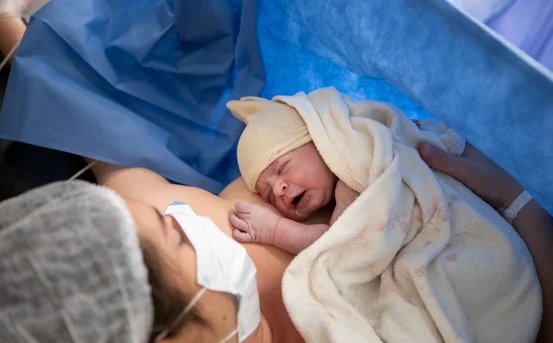Introduction
Dilation and Curettage (D&C) is a common gynecological procedure used to diagnose or treat various uterine conditions. While it is considered safe and minimally invasive, patients often experience several symptoms after surgery, including symptoms of the dilation and curettage surgery. Some are a normal part of recovery, while others may indicate complications that require medical attention.
Understanding what symptoms are typical and when to seek help can greatly reduce anxiety and support a smoother recovery.
What Is D&C Surgery?
Dilation and Curettage (D&C) involves:
- Dilation: The cervix is gently opened.
- Curettage: A surgical instrument called a curette is used to scrape or suction the lining of the uterus (endometrium).
The procedure is used to:
- Diagnose abnormal uterine bleeding
- Clear retained products of conception after a miscarriage
- Treat molar pregnancy
- Remove polyps or small fibroids
- Take tissue samples for biopsy
The surgery usually lasts 15–30 minutes and is performed under local, general, or spinal anesthesia.
Common Symptoms After D&C Surgery
Most women experience some symptoms following a D&C procedure. These are generally mild and temporary.
- Vaginal Bleeding or Spotting
- Duration: Light bleeding or spotting can continue for up to 1–2 weeks.
- Color: Usually bright red at first, turning pink or brown as it lessens.
- Management: Use sanitary pads only (avoid tampons to prevent infection).
- Mild to Moderate Cramping
- Cramping is caused by the uterus contracting as it returns to its normal size.
- It may feel similar to menstrual cramps.
- Cramping typically lasts for 1–3 days.
Relief tips:
- Apply a warm heating pad to your lower abdomen.
- Take prescribed or over-the-counter painkillers (e.g., ibuprofen or acetaminophen).
- Fatigue and Weakness
- General tiredness is common, especially due to anesthesia and minor blood loss.
- Rest is important in the first 24–48 hours.
- Avoid heavy lifting or strenuous activities during the initial recovery phase.
- Nausea or Lightheadedness
- Anesthesia can cause temporary nausea or dizziness post-surgery.
- This usually resolves within a few hours.
- Stay hydrated and eat light, bland foods.
- Emotional Ups and Downs
- Emotional distress is common, particularly after a miscarriage-related D&C.
- Hormonal fluctuations, grief, and anxiety can lead to mood swings.
- Talk to a counselor or support group if emotions become overwhelming.
Less Common but Concerning Symptoms
Though rare, some symptoms may indicate complications that need immediate medical attention.
- Heavy Vaginal Bleeding
Warning signs:
- Soaking a pad in less than an hour
- Passing large blood clots
- Continuous bright red bleeding after 2–3 days
This could signal:
- Incomplete uterine evacuation
- Uterine injury
- Delayed bleeding reaction
- High Fever (Over 100.4°F / 38°C)
A persistent fever after D&C could suggest:
- Infection of the uterus or pelvic organs
- Reaction to medication or anesthesia
Seek urgent care if fever is accompanied by chills or foul-smelling discharge.
- Foul-Smelling Vaginal Discharge
- Normal discharge after D&C is typically odorless or mildly metallic in smell.
- Foul odor may indicate a bacterial infection or endometritis (uterine infection).
- Treatment may require antibiotics and close monitoring.
- Severe or Worsening Abdominal Pain
Mild cramping is expected, but severe, sharp, or one-sided pain may be a red flag for:
- Uterine perforation
- Cervical trauma
- Internal bleeding
- Infection
Pain that worsens or doesn’t improve with medication needs medical review.
- Prolonged or Delayed Return of Period
- Menstrual periods typically resume 4–6 weeks after D&C.
- A delayed return may be due to:
- Hormonal imbalance
- Uterine scarring (Asherman’s syndrome)
- Hormonal imbalance
If your period doesn’t return within 6–8 weeks, follow up with your gynecologist.
- Signs of Infection
Watch for:
- Fever
- Lower abdominal tenderness
- Discharge with a strong odor
- General feeling of illness
Early diagnosis and antibiotics can prevent complications like pelvic inflammatory disease (PID).
Symptoms That Indicate Emotional Distress
Post-D&C emotional symptoms are valid and important. You may experience:
- Sadness or grief (especially after pregnancy loss)
- Anxiety or panic attacks
- Insomnia
- Guilt or anger
These may resolve gradually, but professional support is essential if:
- Symptoms interfere with daily life
- Feelings worsen over time
- You experience suicidal thoughts
Don’t hesitate to seek help from a therapist or counselor.
Post-Surgery Care to Ease Symptoms
To support recovery and minimize symptoms:
- Rest for at least 24–48 hours.
- Avoid tampons, intercourse, or douching for at least 2 weeks or as advised.
- Drink plenty of fluids to stay hydrated.
- Eat nourishing food to regain energy.
- Take prescribed medications exactly as directed.
- Attend follow-up appointments to ensure healing.
When to See a Doctor
Contact your healthcare provider immediately if you notice:
- Heavy bleeding
- Fever or chills
- Foul vaginal odor
- Severe abdominal pain
- Dizziness or fainting
- No period after 6–8 weeks
- Emotional symptoms that persist or worsen
Prompt attention can prevent serious complications.
Conclusion
Dilation and Curettage (D&C) is generally a safe, short procedure with a predictable recovery process. Most symptoms like light bleeding, cramping, and mild fatigue are normal. However, understanding when symptoms go beyond typical healing signs is crucial.
By staying informed and following aftercare instructions, you can minimize discomfort and recover safely. Always stay in touch with your gynecologist and report any unusual changes immediately. Your health—both physical and emotional—matters deeply after any medical procedure.






















